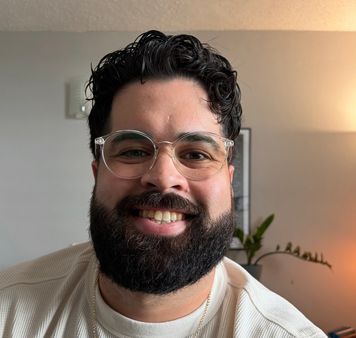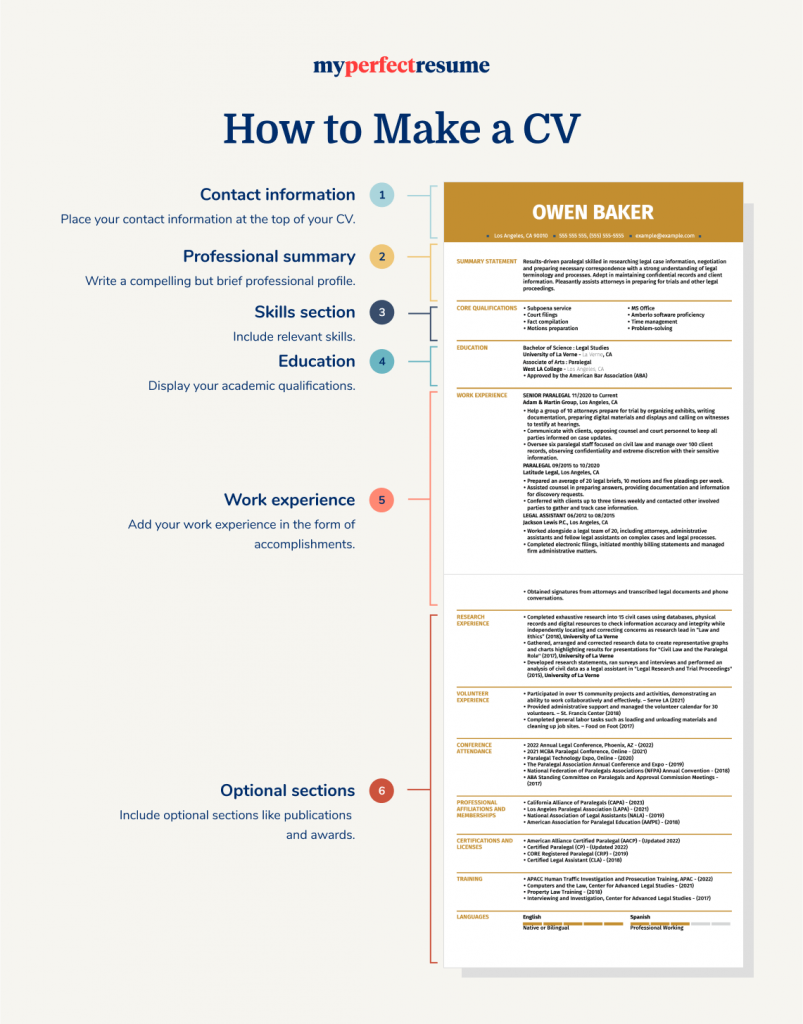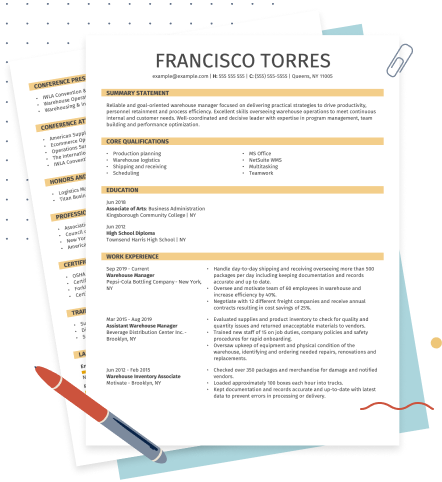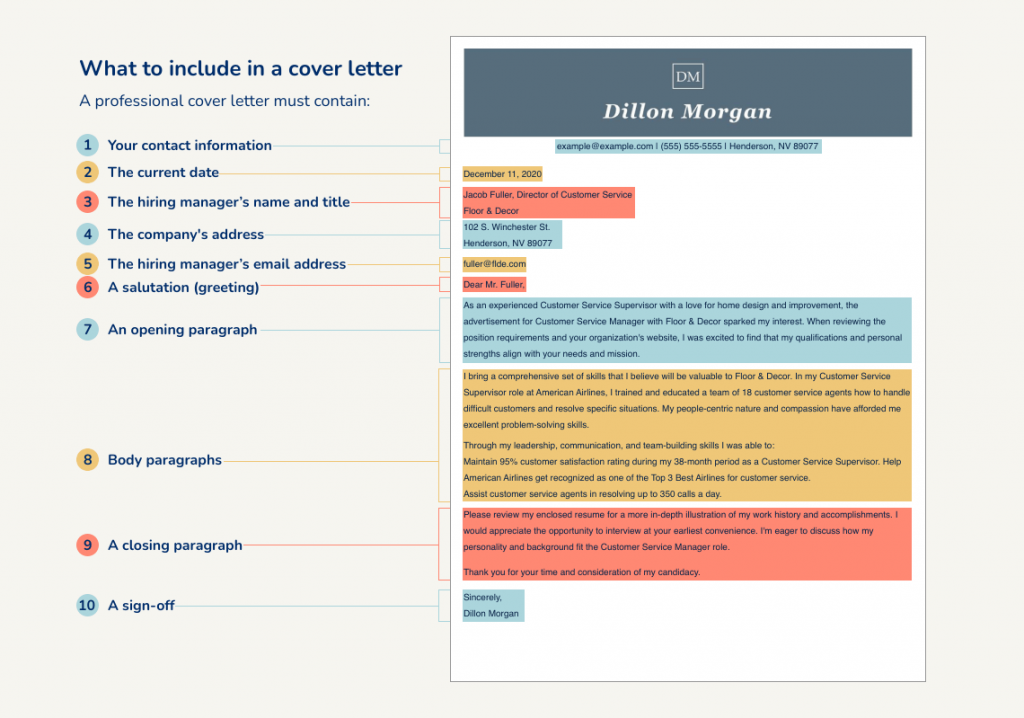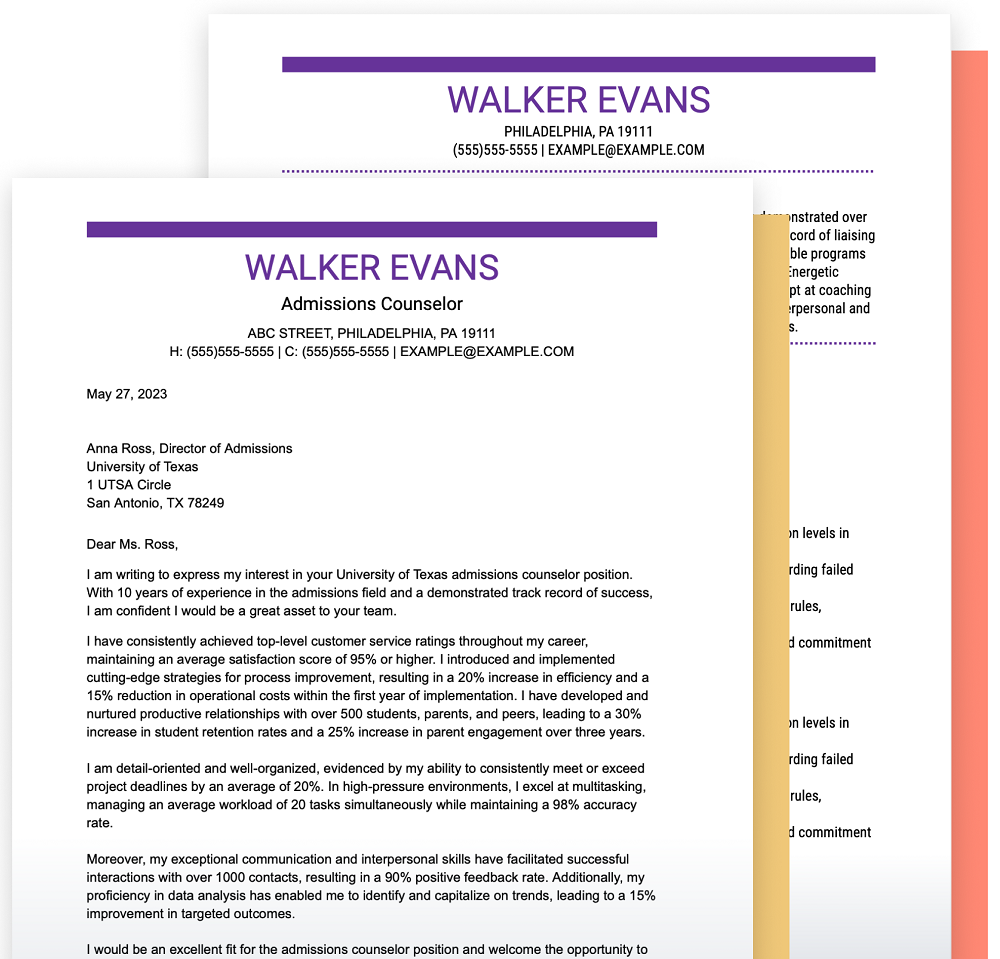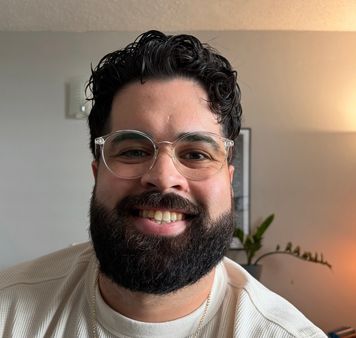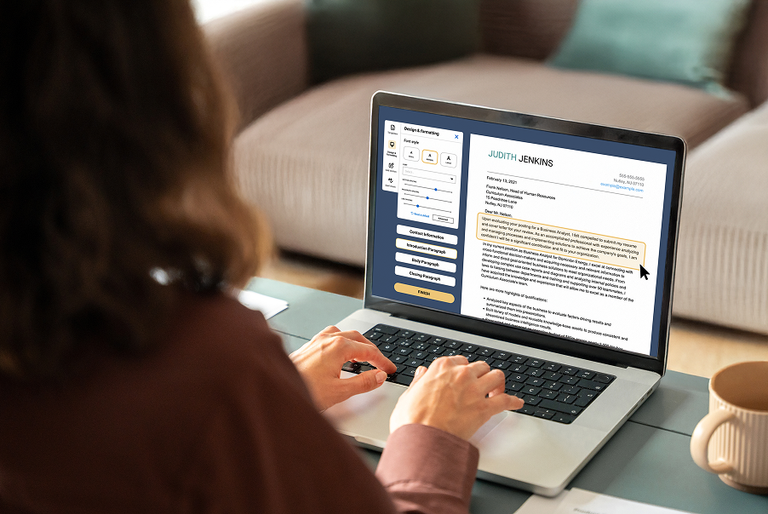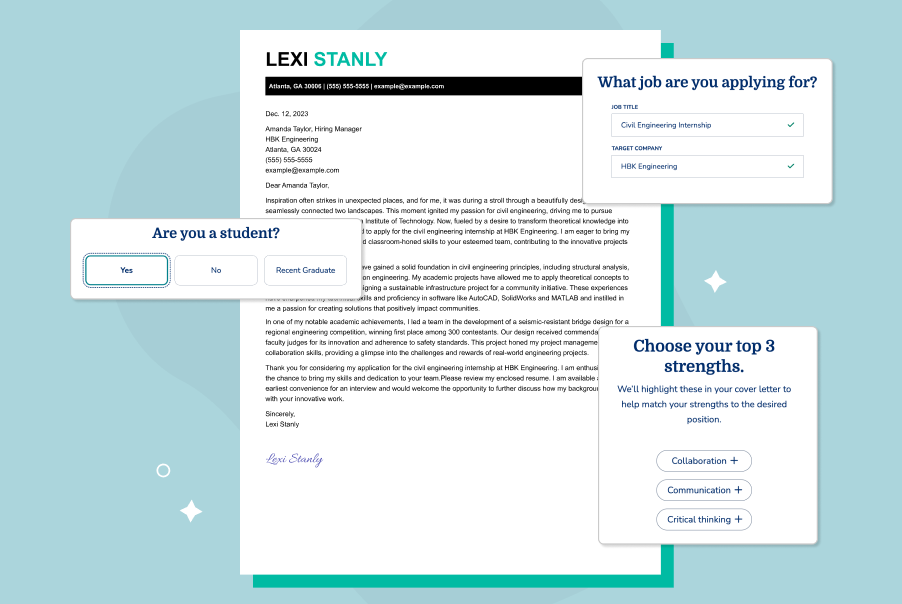Our customers have been hired at: *Foot Note
Aside from resumes, CVs and cover letters are the most important tools in your job search. However, while many people—especially new job seekers—may confuse them, they are vastly different.
CVs are similar to resumes, but they include significantly more information, painting a much broader picture of your experience, both academic and work-related. Cover letters, on the other hand, provide additional context to your CV or resume.
In this guide, we’ll go into detail about the differences between a CV and a cover letter, and what they mean for your job search.
Jump to the following sections:
You can get started on both documents using our CV Maker and our Cover Letter Generator.
What Is a CV?
A curriculum vitae, or CV, is a resume-like document including most, if not all, of your academic and professional experience. There are differences between a CV and a resume, though. While a resume is typically one-page long, a CV goes far beyond the basic resume sections.
A CV usually outlines your entire career, from your academic background to the associations you've joined and the jobs you’ve held. It’s often required in academic and research settings, which is why many CV examples include detailed accounts of research, conferences, and journal publications.
There are other types of jobs that may ask for a CV as well, such as roles in law and medicine. Tailor yours to the specific role, selecting the experiences you have that relate most to each role.
Contact information
At the top of your CV, you’ll add your contact details, starting with your name in a large, bold font. This is what recruiters see first, so it’s important to make it easily identifiable and memorable for when they want to look at it again and contact you.
Also, add your email address, phone number, city, state, and zip code, and any relevant links such as LinkedIn, your Bold.pro profile, or other professional portfolios.
Professional summary
The professional summary is your elevator pitch. This is the first section of your CV that makes a case for your employment, so make sure to mention your top skills, your most relevant accomplishments, and your enthusiasm for the role.
Skills section
Since a CV dedicates more space to your work and education history, and the skills section is much shorter, you can place it above your work history without fear of it deviating the reader like it would on a resume.
Here, add hard, soft, and transferable skills relevant to the role you’re applying for. If your field is very technical, make sure to include specific skills necessary to do the job successfully, such as software proficiency or machinery operation experience.
Education
Since CVs are more regularly required by academic and research institutions, detailing all your relevant education is crucial. Your education section should be placed prominently so recruiters and hiring managers can quickly see your qualifications. Include the institution, your graduation date, your degree, and your major for each degree listed.
You don’t have to go beyond that, but if it’s highly relevant, you can include courses or certifications here too—however, if you have a lot of certifications, consider adding a dedicated section for them.
Work experience
This will likely make up the bulk of your CV, depending on your career level. While it’s not completely necessary to add every single job you’ve held, it is important to include all those relevant to the role. For example, if you’ve been a college professor at six different schools over the past 20 years, it’s best to add all six.
Be sure to detail your tasks, responsibilities, and important accomplishments. Use action verbs to describe each task and back up your achievements with numbers and statistics, if possible, to add measurable impact to your skills.
Optional sections
Depending on your field of work, you may want to include some of these sections in your CV:
- Publications and presentations: As a researcher, you’ll want to include most, if not all, of your publications and presentations to highlight your investigative work.
- Certifications and licenses: Special licenses such as machinery operation, CPR, security training, software development, and others can add value to your application.
- Awards: Awards provide proof of the quality of your work, as well as other important factors such as leadership and community involvement.
- Volunteer work: In some fields, such as healthcare, education, or environmental work, volunteering is often crucial work that contributes greatly to your development and credentials.
What Is a Cover Letter?
A well-written cover letter is your chance to make a strong first impression with hiring managers and recruiters. It uses a narrative style to provide more context about the achievements, tasks, and responsibilities listed on your CV.
Cover letters are usually tailored to the job you’re applying for and focus on one or a few specific roles or responsibilities that communicate how your skills and experience make you a great potential hire. While this is significantly different from a CV, it can be used to complement one (just like it can a resume).
You can look at cover letter examples to see how a cover letter is written and formatted.
Header and information
Just like with your resume or CV, you’ll want to add a bold, noticeable header to your cover letter. Your name should be easily identifiable, perhaps with some color or a slightly different font. Below, write your email address, your phone number, and your city, state, and zip code.
Addressing the company
Start with the date you plan on submitting your application, then include the name and title of the hiring manager, as well as the name and address of the company. This is the best way to address a cover letter, as it’s personal and shows your genuine interest in the job. If it’s not possible to find the specific name of the person, use a title such as “hiring manager.”
Salutation
When opening up your cover letter, use a proper salutation. It’s best if you include the name of the hiring manager, or whoever your cover letter will be read by. If that’s not possible, write “Dear Hiring Manager.”
Opening paragraph
In the opening paragraph, you want to introduce yourself and include a bit of background on your qualifications. Then, talk about how you came across the posting and why you think you’d be a good fit for the role.
Body paragraphs
The body paragraphs are where cover letters shine. Pick a particular role, skill, or situation you want to discuss in more detail and use it to demonstrate your skills in action and what you’ve achieved with them. It’s important to use action verbs, measurable achievements (with numbers to back them up), and keywords that match the job description.
Closing paragraph and signoff
Your closing paragraph should concisely summarize the qualifications you’ve mentioned in your cover letter. Reiterate how you’re the best candidate for the job and connect it to the mission or overall identity of the company.
Also, remember to thank the reader for taking the time to review your application, show enthusiasm for the role, and include a call to action such as “Looking forward to your response.” Finally, add a respectful signoff like “Sincerely” before signing your full name.
Key Differences Between a CV and a Cover Letter
It’s important to understand the differences between a CV and a cover letter, so you can more effectively write either one.
Here are some crucial differences to note:
Content and length
CVs and cover letters can overlap in parts of their structure, such as the header, which can be essentially the same for both. Overall, however, you’ll quickly notice just by their length and their content’s structure that they’re very different.
CV:
- Ranges from two to six pages long
- Includes almost your entire work and education history listed chronologically
- Has sections for publications, presentations, and specific coursework
Cover letter:
- Is half a page to one page long
- Highlights a few select work-specific wins to paint a broader picture of your skills
- Provides an opportunity to showcase your personality and show enthusiasm for the role
Purpose in the application process
CVs and cover letters serve two very different purposes, making them both crucial to the application process.
On one hand, CVs provide your education and work history, as well as other accomplishments. It fulfills a role similar to a resume, as it’s a way to showcase your qualifications and experience.
Meanwhile, a cover letter is an opportunity to dive deeper into certain key aspects of your experience, highlighting scenarios where you put your skills to good use. It also showcases more of your personality since it’s written in narrative form.
Cover letters complement CVs and resumes, giving more of a voice to the roles and tasks you’ve listed. That’s why it’s important to deliver both, even when a cover letter isn’t mandatory—unless the employer explicitly asks not to include a cover letter.
How to Effectively Use Both in Your Job Application
Tailoring your CV and cover letter
Every application should be as personalized as possible, including all the documents you send in.
When it comes to writing a CV, make sure to:
- Add relevant sections, such as publications when applying for research or academic positions, or awards and grants when applying for creative jobs.
- Personalize your professional summary to match the keywords in the job description and highlight the skills most relevant to the role.
- Choose tasks that match the role to go into depth on, such as logistical or leadership tasks when applying for management positions.
Writing a cover letter requires even more personalization:
- Mention the company name and include how you found out about the position.
- Talk about a particular win that could directly translate into the role you’re applying for, and explicitly state how it matches the role’s expectations.
- Refer to the hiring firm’s mission and philosophy, and explain how you’d fit into their culture.
Ensuring consistency between documents
A job application is at its best when all documents match and feel consistent.
For starters, create matching headers for your CV and cover letter, using the same color, design, and font for your name. This alone will create harmony between documents and make your application cohesive and professional.
While a cover letter doesn’t have much space beyond the header to include color, you can continue matching the design through font choice, font size, and spacing. When using CV templates, look for matching cover letter templates to ensure consistency from the get-go.
Lastly, make sure the content matches as much as possible. You can do this by choosing a prominent role and project from your CV to describe in further detail in your cover letter.
Also, match keywords from the job description, especially in your professional summary and the opening paragraph of your cover letter.
Proofread and Start Your Application Process
Before submitting, make sure to proofread both your CV and cover letter. If you can, get a friend, colleague, or mentor to take a look at them, as a new pair of eyes might catch things you couldn’t, and provide valuable perspective.
Having done all that, you’re ready to apply to those dream jobs and start getting ready for when you land that interview.
Key Takeaways
- CVs are a comprehensive account of your professional and academic background, while cover letters expand on your achievements in a narrative format.
- Cover letters are significantly shorter than CVs, but provide great detail about a particular role or task.
- Matching your cover letter and CV provides consistency in your application.
- Tailoring both documents to the specific job you’re applying for will give you an edge in the application process.
FAQ
Can I use a CV instead of a resume?
While very similar, these two documents aren’t exactly interchangeable due to the different requirements of employers and institutions. Using a long CV instead of a resume when it isn’t requested could result in your most relevant experience being overlooked.
However, if the employer explicitly asks for your CV or it’s standard to submit one for your career (i.e., scientists, professors, medical staff, lawyers), go ahead and submit a CV instead of a resume.
Do I need a cover letter even though it's not required?
If a job posting doesn’t explicitly ask for a cover letter, it’s not necessary to include one with your application. However, a tailored cover letter can give you a competitive edge. Firstly, it shows your commitment and enthusiasm for the role; second, it’s an opportunity to dive deeper into your capabilities.
That being said, if the employer explicitly asks applicants not to submit a cover letter, please do not submit one. A cover letter should add to your application, not subtract from it.
What if I don't have enough experience to fill a CV?
Although a CV is usually long and detailed, it doesn’t need to be longer than two pages nor does it mean it’s just for experienced workers. There are many details you can add to a CV to flesh it out even if you haven’t worked for long, such as volunteer experience, awards, projects, extracurricular activities, coursework, and even relevant hobbies.
Should I use bullet points in my cover letter?
You can definitely use bullet points, especially to point out three to four specific tasks or achievements you want hiring managers to know about. However, one bulleted list is enough for a one-page cover letter.
Our customers have been hired at:*Foot Note
